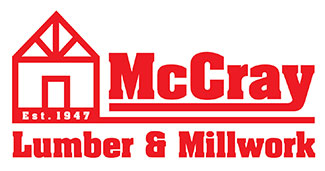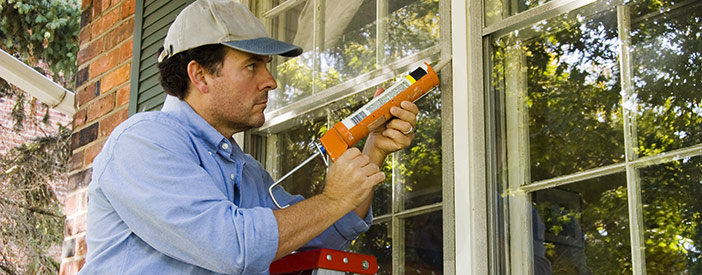The leaves are falling and the weather is turning crisp and cool. Now is the time to get your home weatherproofed and prepared for winter before the freezing temperatures, snow, and ice arrive.
Weatherproofing will help your home feel more comfortable and lower your heat and energy costs. According to the U.S. Department of Energy, drafts that enter your home through cracks and leaks can waste 5 to 30 percent of your energy use. Failing to winterize your home can also lead to burst pipes and other expensive damage.
Start by testing your home for cracks and leaks. To test the air tightness of your home, hold a lit incense stick next to your doors, windows, electrical outlets, ceiling fixtures, fireplaces, electrical boxes, plumbing fixtures, attic doors, fireplaces, and other spots where outside air may be sneaking in. If the smoke begins to waft any direction other than vertically, that indicates an air leak.
Caulk all the doors and windows that are leaking air. Different caulks are best suited for different applications. Be sure that the caulk you select is the right one for the job. Don’t forget to look for gaps and caulk outside too.
Weather-strip all of your doors and windows. Different types of weather stripping serve different functions. Your weather stripping should be tight enough to seal up the leak without affecting how the door or window operates. You may also want to consider installing a draft guard on the bottom of your doors to help keep out drafts. In a pinch, a rolled up towel placed tightly against the bottom of the door can be effective.
Consider installing storm windows and storm doors. A storm door can increase energy efficiency by as much as 45 percent. Install a storm window over single pane windows to increase efficiency and eliminate drafts, condensation, and frost formation.
Install rubber gaskets behind all outlets and switch plates on exterior wall to help reduce drafts.
Insulate your hot water heater with an insulating blanket.
Proper insulation can significantly boost your home’s energy efficiency. Look for places where your insulation may need to be replaced. Dirty spots on your insulation can indicate that air is leaking in or out. Seal these holes with new insulation or staple sheets of plastic over the holes and caulk the edges of the plastic. Add more insulation between your walls, attic floor, and basement ceiling.
Ensuring that your heating system is in tip-top shape can also improve energy efficiency. First, test your heating system to ensure it is working okay. Set the thermostat to 80. If it is working okay, you should hear it click on and feel warm air blowing within a few minutes. If it is not working, call a qualified technician for a diagnosis and repairs. Don’t forget to change your furnace filters. This should be done every month during heating season. A dirty filter restricts air flow and increases energy demand. If you don’t want to mess with replacing the filter monthly or have trouble remembering, a permanent filter is another option. These cost more but are more effective than fiberglass filters at controlling bacteria, mold, viruses, and pollen.
Your AC unit needs some attention before winter too. Clean the condensing unit to remove dirt and debris and cover it with a breathable waterproof cover to protect it over the winter. If you have any window AC units, remove them from the window and store inside for the winter or purchase a quality tarp
Burst pipes can be expensive to repair. Insulate piping in uninsulated places, including your crawlspace, attic, or outside walls with foam insulation or, better yet, wrap them with electrical heating tape and then insulate them. Exterior faucets need to have their water supply turned off inside the house and then be drained by opening the exterior faucet. You can also insulate them with a hose bib. Disconnect all of your garden hoses and store them for the winter.
Don’t forget about your sprinkler system. You should have a professional winterize your sprinkler system by turning off the water and blowing compressed air through the system to remove remaining water. Attempting to do this yourself could damage your sprinkler system.
Check your fireplace and chimney for damage and proper operation. Make sure there are no nests from birds or squirrels inside. Ensure that the flue opens and closes fully and can be locked into position. You should also check to make sure the chimney will draw up fire and smoke by lighting a wad of newspaper and watching for the smoke to rise up the chimney. You might also want to consider having it professionally cleaned.
Ceiling fans are great at helping keep things cool during the warmer seasons, but did you know they can also help keep rooms warm in the winter? Switch your ceiling fans to reverse (clockwise) to push warm air that is pooled near the ceiling back into circulation in your living space. This can reduce your heating costs by as much as 10 percent.
Making these simple repairs will not only keep you warm this winter, but will also help keep your house cool next summer.


